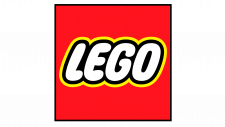Lyft Logo
Lyft, headquartered in San Francisco, is a leading ride-hailing company, offering services such as peer-to-peer ridesharing, bike-sharing, and rental cars. With a primary market focus in the U.S. and Canada, Lyft is driven by a mission to reduce urban congestion and provide transport alternatives. Though publicly traded, its largest stakeholders include institutional investors and its founders. As of 2022, Lyft continues to innovate in the transport sector, emphasizing green initiatives and expanding service options.
Meaning and history
Lyft, an emblematic name in the ride-hailing industry, was established in 2012 by Logan Green and John Zimmer. Initially, it began as a project within Zimride, a long-distance carpooling company the duo founded in 2007, inspired by Green’s experience with carpool systems during a trip to Zimbabwe. Zimride focused on shared rides for university and corporate communities.
Recognizing a broader opportunity, Green and Zimmer reoriented their focus from long-haul carpooling to shorter, city-based rides. Thus, Lyft was born, featuring a unique touch – drivers would adorn their cars with giant pink mustaches, making them easily recognizable. This bit of whimsy underscored Lyft’s mission: to foster community and human connection.
Lyft’s growth trajectory wasn’t without challenges. It had to contend with regulatory hurdles, as many cities had existing taxi systems protected by various regulations. Moreover, a fierce rivalry with Uber, another ride-hailing giant, made for a competitive landscape. Despite this, by prioritizing driver welfare and community-building, Lyft distinguished itself from its competitors.
In 2013, only a year after its inception, Lyft began expanding beyond San Francisco, targeting major US cities. The company’s rapid growth attracted significant investment. By 2015, Japanese e-commerce giant Rakuten had invested $300 million, acquiring a substantial stake.
As the company matured, its service portfolio expanded. Lyft ventured into bike-sharing through the acquisition of Motivate in 2018, positioning itself not just as a car-hailing service, but a comprehensive transport solutions provider.
Lyft went public in March 2019, marking a significant milestone. As a publicly traded company, ownership became more dispersed, with shares available to retail and institutional investors. Despite Logan and Zimmer’s diluted ownership, their leadership remained pivotal to Lyft’s direction.
Throughout its journey, Lyft stayed committed to sustainable initiatives. A key pledge was to make all rides carbon neutral and, later, to transition to 100% electric vehicles by 2030.
In conclusion, from its inception as a mere subset of Zimride to becoming a dominant name in urban transport, Lyft’s story is one of innovation, adaptability, and a steadfast commitment to community and sustainability.
2012 – Today
A leading entity in the transportation arena chose to differentiate itself from its rivals using a whimsical emblem – a pink script in a playful typeface.
The hue picked played a pivotal role in Lyft’s brand strategy. Every driver, in collaboration with Lyft, adorned their vehicles with a conspicuous pink mustache on the front. This quirky concept was birthed by Ethan Eyler, a close confidant of Green and Zimmer, who introduced the idea of embellishing cars with a furry mustache.
While Lyft’s initial symbol prominently featured this renowned mustache, it wasn’t universally embraced. The ultimate design retained just the pink lettering, sans any additional visuals. The company’s visionaries aspired for the brand to evoke joy and comfort consistently. They aimed not only to lure a diverse clientele but specifically to ensure women, both as drivers and riders, felt an innate sense of safety during shared journeys.
This innovative take on branding significantly elevated Lyft’s recognition. The rosy insignia underscores the brand’s welcoming nature, appealing to all, irrespective of their age or gender. Contrary to the industry’s norms, Lyft successfully sidestepped the typically rugged or even intense designs prevalent in the transportation field, fostering an inclusive environment.











